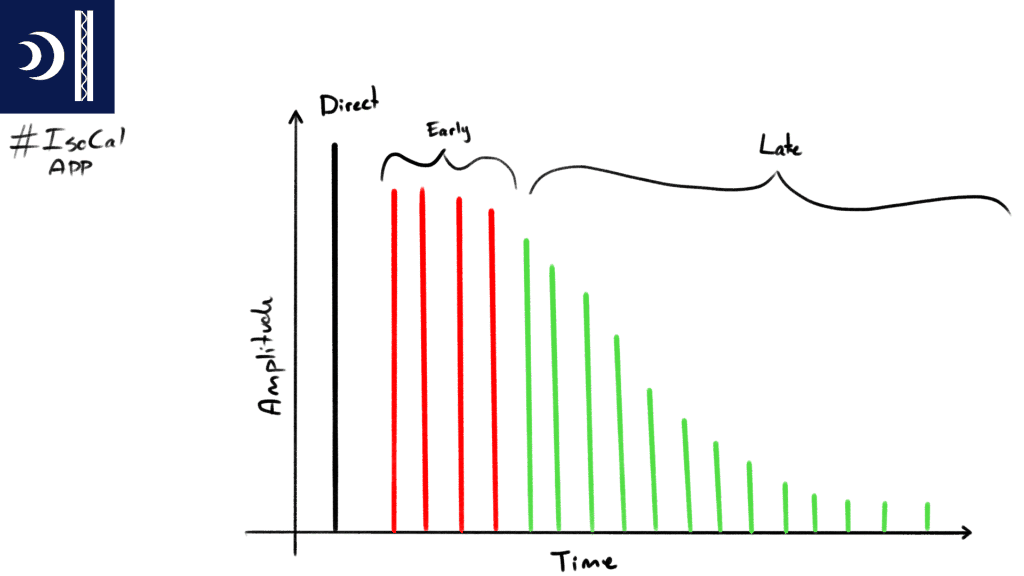Room Acoustics – The Basics of Decay Curves
You can get quite a bit of information out of a room by simply snapping your fingers or clapping your hands.
Theoretically you can excite all sound wavelengths (keyword here is: theoretically ) and listen to the whole impulse response of the room only limited by your own hearing.
Imagine the sketch below, a speaker (source) in one end and a listener (receiver) in another end of the room. Initially, in the receiver end, you’ll hear the “Direct” sound. Afterwards, you’ll hear the “Early” reflections, and later the “Late” reflections.

This is also the foundation of how we measure the reverberation time in a room.
As a continuation of the sketch above, the Sketch below will give a general idea of what to expect in a room with fairly diffuse sound conditions.

You’ll quickly see (and hear) how the reverberation time can be an important factor when designing for good acoustics indoors, as you don’t want the sound to ‘smear’ into itself and leave a long tail of noise. In many cases the reverberation time can directly correspond to the speech intelligibility.